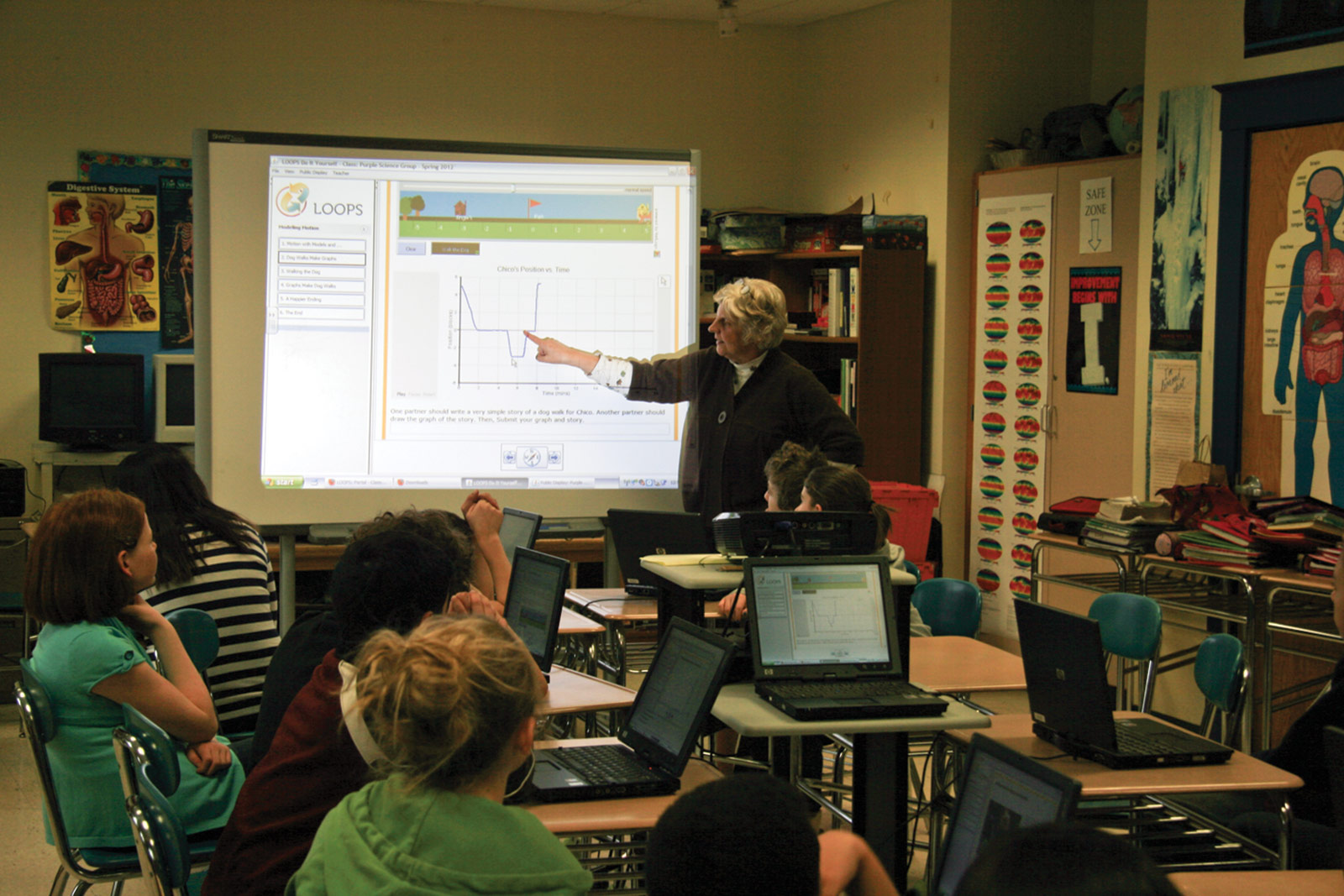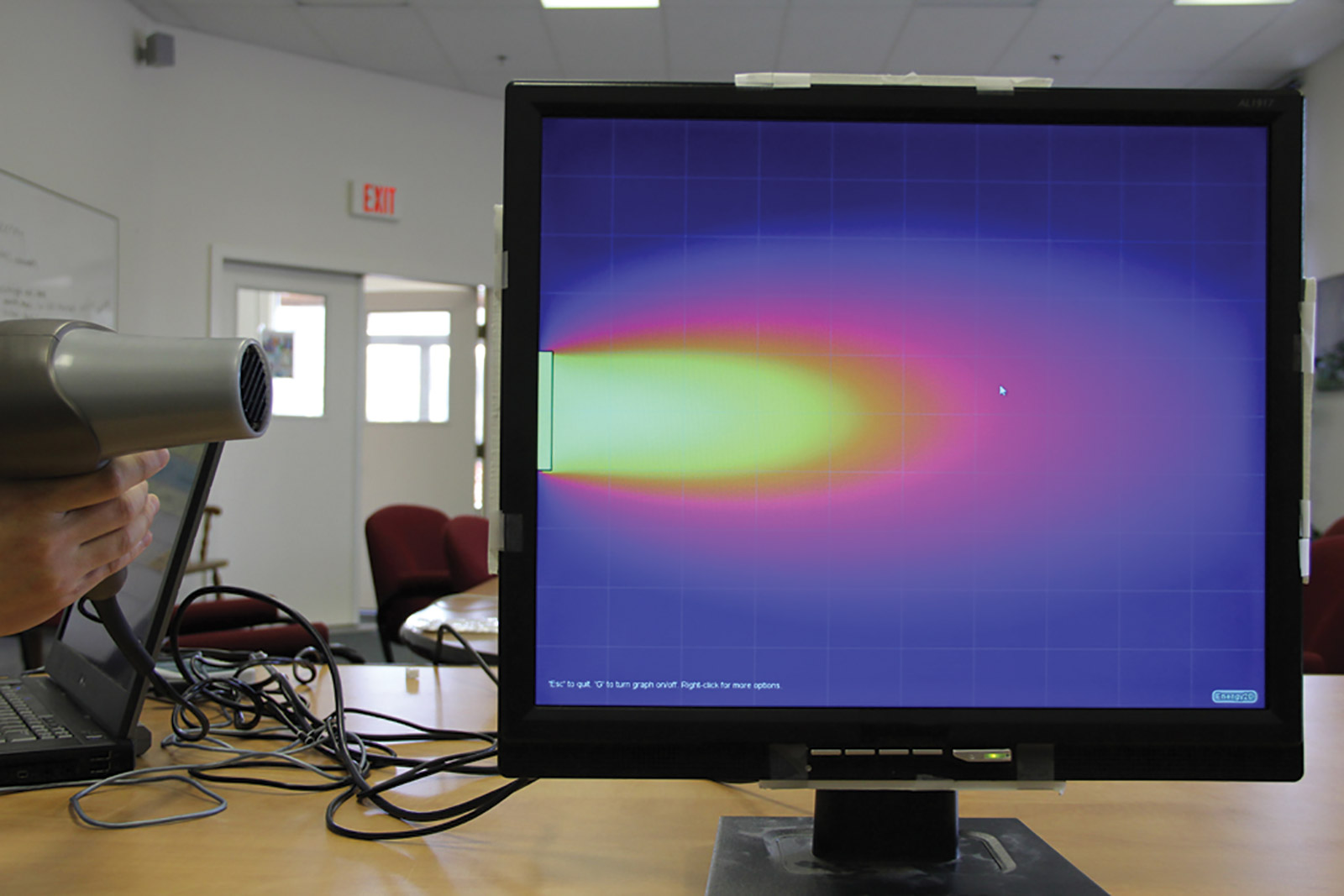Framing Mixed-Reality Labs, Genetics Software Gets a Lift from Gaming, Disruptive Science Coming Soon to Your Phone and Tablet, and more in Spring @Concord
Perspective: True Blended and Flipped Learning
Today's conversation about technology in education rings with promise as educators discuss “blended learning” and “flipping the classroom.” New ages in education always introduce their share of new terms and ideas, and this one is no exception. These bring energy to the discussion and help people engage with technology in ways they hadn't previously. But these terms can be thought of in several ways.
LOOPS Offers a Lens on Learning
Imagine you are a student. Your teacher gives you a handheld instrument, but the instructions for using it are lost! You're told that it displays a graph of position vs. time when plugged into your computer, and you’re asked to take some measurements. What would you do?
Monday's Lesson: Build and Test a Model Solar House
The "E" in STEM stands for engineering, of course. The importance of engineering education is now widely accepted, but it is not widely incorporated into the school curriculum. Teachers and students need more projects that are modest in length, tackle real-world problems, and are connected to science and math, as well as to engineering standards.
Framing Mixed-Reality Labs
Laboratory experiences are indisputably a fundamental part of science education. In order to understand the concepts at work in an experiment, students must place the data they collect into a conceptual framework. However, there is often a wide gap between the raw data and the abstract concepts under investigation. For example, to understand heat transfer measured by a thermometer, students must imagine the invisible flow of thermal energy; to understand the intensities measured by an electromagnetic field sensor, they must visualize an electromagnetic field. In these cases, "heat" and "field" are the conceptual frameworks. A lab would have limited educational value if it could not bridge data and the underlying concepts.
A Drake's Tale: Genetics Software Gets a Lift from Gaming
Many of us learned about dominant and recessive genes in a humdrum high school biology class. Some of us may still recognize the terms and symbols twenty or thirty years later—are your eyes bb or Bb? But, as it turns out, a very small number of traits in humans and other animals, plants, amoeba … you name it … involve the dominance mechanism of a single gene with just two alleles. (An allele is a variation of a gene, like the B or b in the above example.) The more biologists discover about the mechanisms of inheritance, the fewer traits we can point to that involve only one gene or can be illustrated using a simple Punnett square. In fact, biologists are compiling information about our genes at an astounding rate. As the process of sequencing DNA improves, the science of biology is dramatically changing.
Disruptive Science Coming Soon to Your Phone and Tablet
Jan is interacting with a computer model of molecules while simultaneously recording the temperature of a cup of water using a sensor. The model shows molecules condensed into a formless mass of atoms randomly slipping past one another at a speed that depends on the temperature of the real water. As Jan cools the water with dry ice, it turns into solid ice. At the same time — because the model is connected to the experiment through the sensor — the molecules in the model line up in regular arrays, still jiggling but locked into a crystalline structure.
Under the Hood: Streaming Arduino Data to a Browser
What if you were reading a blog or working through an online lesson and you could just plug in your sensor and start taking data or interacting with models right in your own browser?
Innovator Interview: Frieda Reichsman
Meet Concord Consortium Senior Research Scientist Frieda Reichsman. Learn about the projects she's working on, how she decided to study science, her frustration with candlepin bowling, and more.





